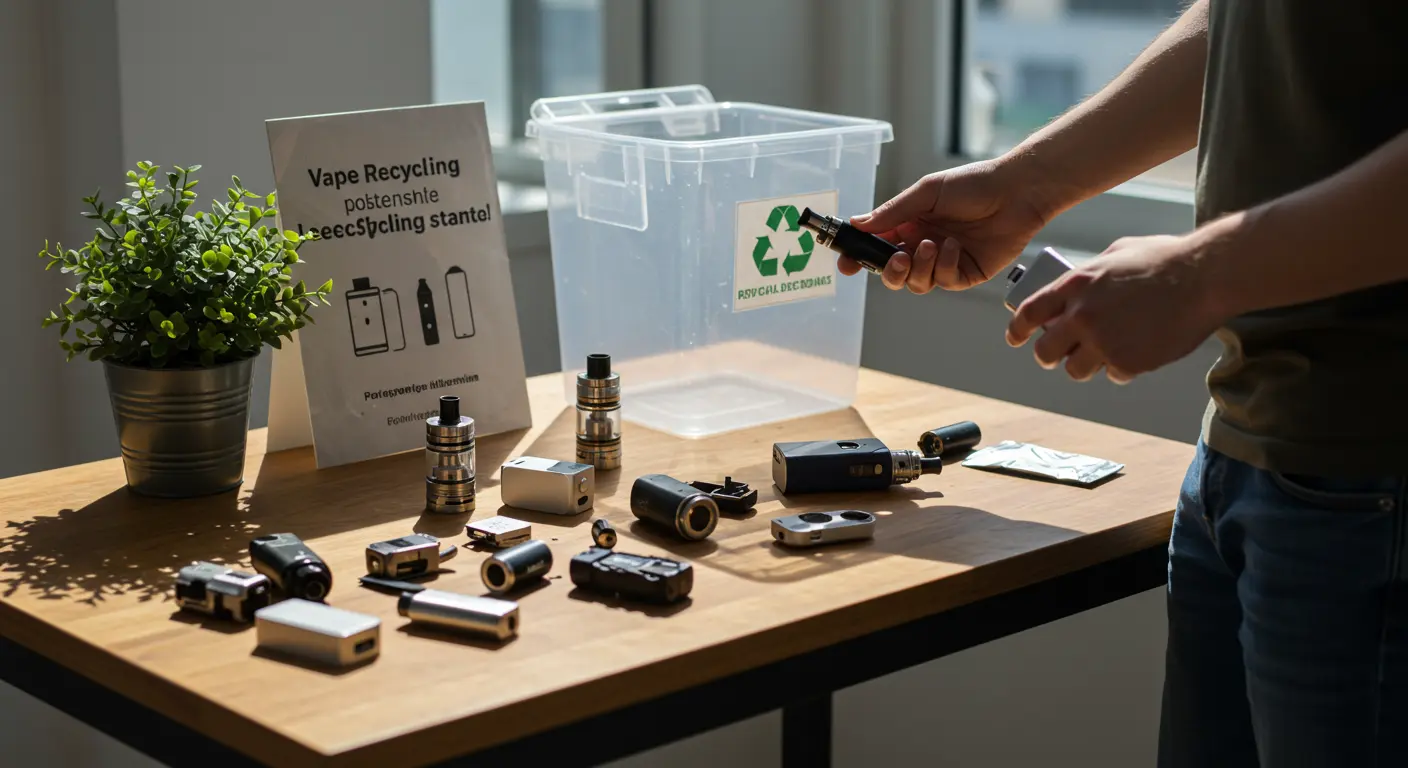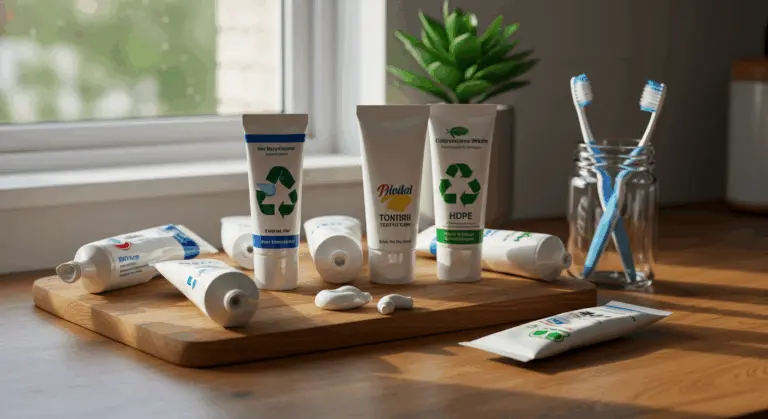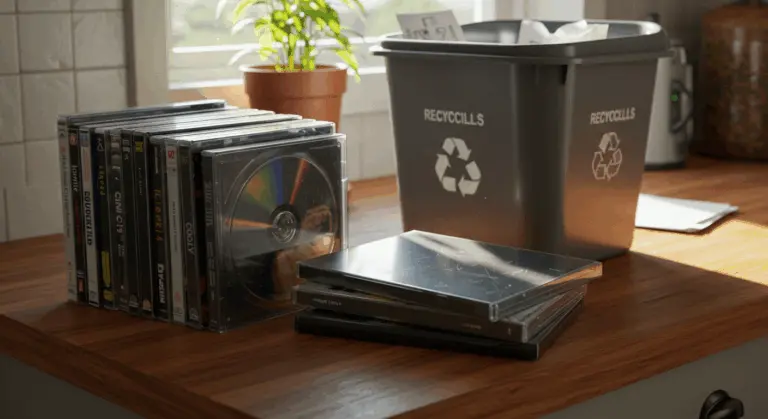Understanding Vape Waste – Environmental Impact
The explosive growth of vaping culture has created a significant environmental crisis: vape waste. These seemingly innocuous devices contain a mixture of plastics, hazardous chemicals, and electronics, creating an ecological footprint that threatens our ecosystems in ways we’re only beginning to understand.
The fundamental problem? Vapes simply don’t decompose. When carelessly tossed aside, their stubborn components persist in the environment, slowly leaching harmful substances into our soil and waterways.
Consider the staggering scale: millions of disposable vapes hit the trash weekly. This represents a serious environmental challenge requiring immediate attention from every stakeholder in the chain.
Why Recycling Vapes is Important
Proper vape recycling goes beyond good practice—it’s essential environmental responsibility. Beyond recovering precious materials like lithium and cobalt in the recycling economy, proper recycling prevents toxic contamination of our natural resources. Most importantly, it eliminates the fire hazard that lithium-ion batteries pose when they end up smoldering in landfills.
Here’s what many don’t realize: vapes can’t simply be tossed into your household bins. These battery-powered devices fall under Waste Electrical and Electronic Equipment (WEEE) regulations, requiring specialized handling that standard waste streams simply can’t provide.
The solution lies in responsible disposal through WEEE facilities or designated vape shop drop-offs. This small extra effort has broader benefits—reducing environmental harm while building momentum toward a truly sustainable vaping industry.
How to Properly Dispose of Vapes
Your local vape shop often provides the simplest disposal solution. Most retailers now offer dedicated recycling bins, creating a seamless process where devices are safely dismantled, valuable materials reclaimed, and hazardous components properly neutralized.
Vape Recycling Programs and Take-Back Schemes
Dedicated vape recycling programs and take-back schemes are transforming responsible disposal by creating dedicated vape recycling programs and take-back schemes. These programs establish convenient drop-off networks where consumers can responsibly dispose of their devices. In north London, where residents can recycle vapes at any local reuse center—staff trained specifically to handle these specialized waste items.
Take-back schemes represent an industry evolution where manufacturers and retailers take responsibility for a product’s full lifecycle. These programs typically operate in several ways:
-
In-Store Returns: Retailers accept used devices directly from consumers.
-
Third-Party Partnerships: Brands partner with specialized recycling companies to process collected vapes.
-
Mail-Back Programs: Some companies provide prepaid shipping materials for consumers to return devices by mail.
These programs rely heavily on consumer engagement. Finding your nearest recycling option is straightforward: seek out vape shops displaying recycling logos, check if your municipality includes vapes in e-waste collection events, or explore mail-back programs offered by forward-thinking companies. These established channels ensure proper handling of every component.
Challenges in Vape Recycling
Despite mounting awareness, vape recycling encounters significant challenges. The core challenge? Design philosophy. Disposable vapes feature permanently sealed lithium batteries—a choice that prioritizes convenience over recallability. This integrated approach causes serious difficulties for recycling facilities that must separate materials for proper processing.
Then there’s the composition complexity. Each device contains multiple materials: plastics, metals, electronics, and chemical residues from e-liquids. This complex combination demands specialized processing that most facilities simply can’t handle. Worse still, nicotine residue transforms used vapes into hazardous waste, triggering additional regulatory hurdles.
Consumer behavior compounds these technical challenges. Many users are unaware of proper disposal methods. Others lack convenient access to appropriate facilities. The devices’ compact size makes them deceptively easy to discard in regular trash—a seemingly harmless action with lasting consequences. This knowledge gap intersects with patchy infrastructure: some regions boast comprehensive e-waste systems, while others offer virtually no recycling options.
Rapid innovation adds further complexity. As manufacturers race to introduce new designs and materials, recycling processes struggle to keep pace. This rapid technological change outpaces the development of standardized protocols, creating a constantly shifting landscape for waste management systems. Industry fragmentation—with countless manufacturers producing devices with unique specifications—makes universal recycling solutions nearly impossible to implement.
Future of Vape Recycling and Legislation
The vape recycling landscape is changing rapidly. Initiatives like Canada’s “Recycle Your Vapes” program are pioneering specialized infrastructure designed specifically for these complex devices. This is more than just one program—it’s a blueprint for addressing electronic waste challenges systematically.
Regulatory intervention is accelerating with growing environmental awareness. Legislators worldwide are crafting stricter policies governing vaping product lifecycles—from manufacturing through disposal. These emerging regulations shift responsibility toward manufacturers, encouraging designs that prioritize recallability from the outset.
Private enterprise is also creating innovative solutions. Stucco Recycling in Dubai exemplifies how businesses are recognizing the opportunity to provide specialized vape recycling services. These ventures bridge critical gaps in existing waste management systems while demonstrating that environmental responsibility can align with business interests. As consumer demand for sustainable products grows, more companies are likely to invest in similar programs.
The goal is A circular economy where vapes become resource repositories rather than waste streams. By extracting valuable metals—lithium, nickel, cobalt—from discarded devices, we can reduce environmentally destructive mining while keeping toxins from contaminating our environment. This shift from wasteful consumption to resource reuse provides the best opportunity for environmental harmony with vaping technology.




